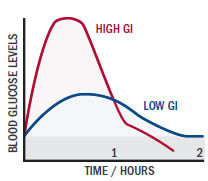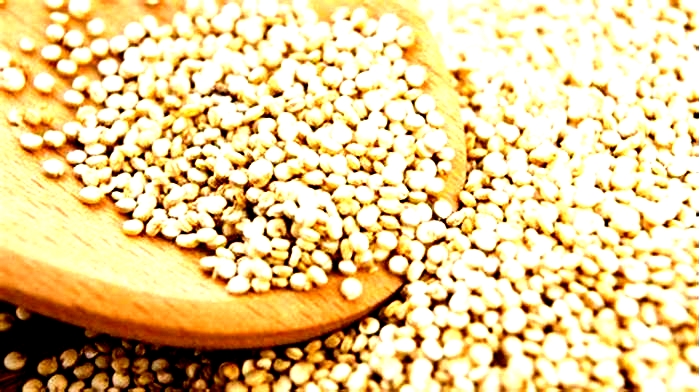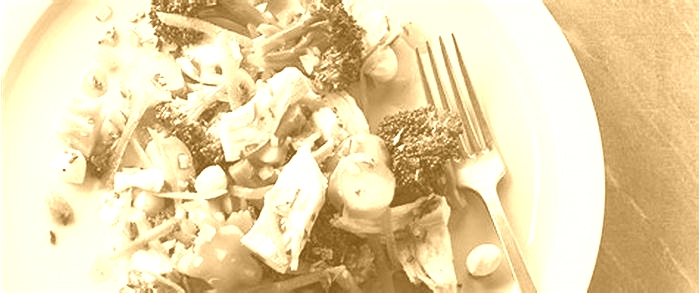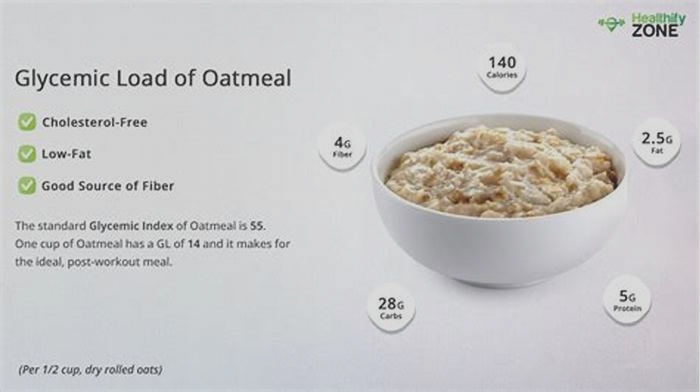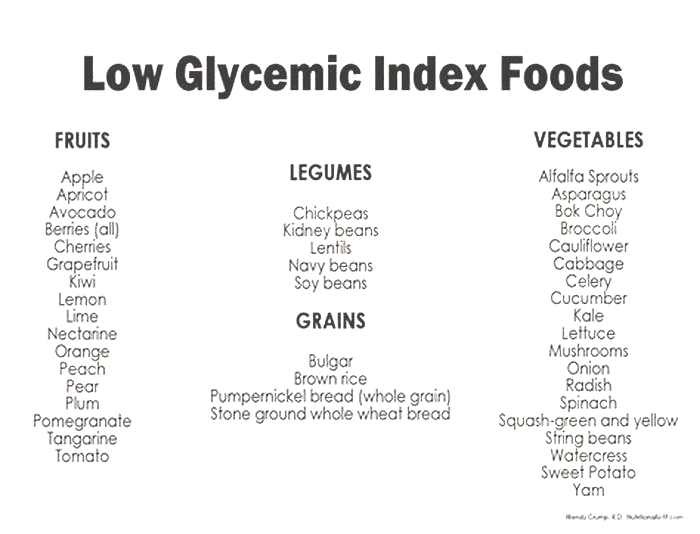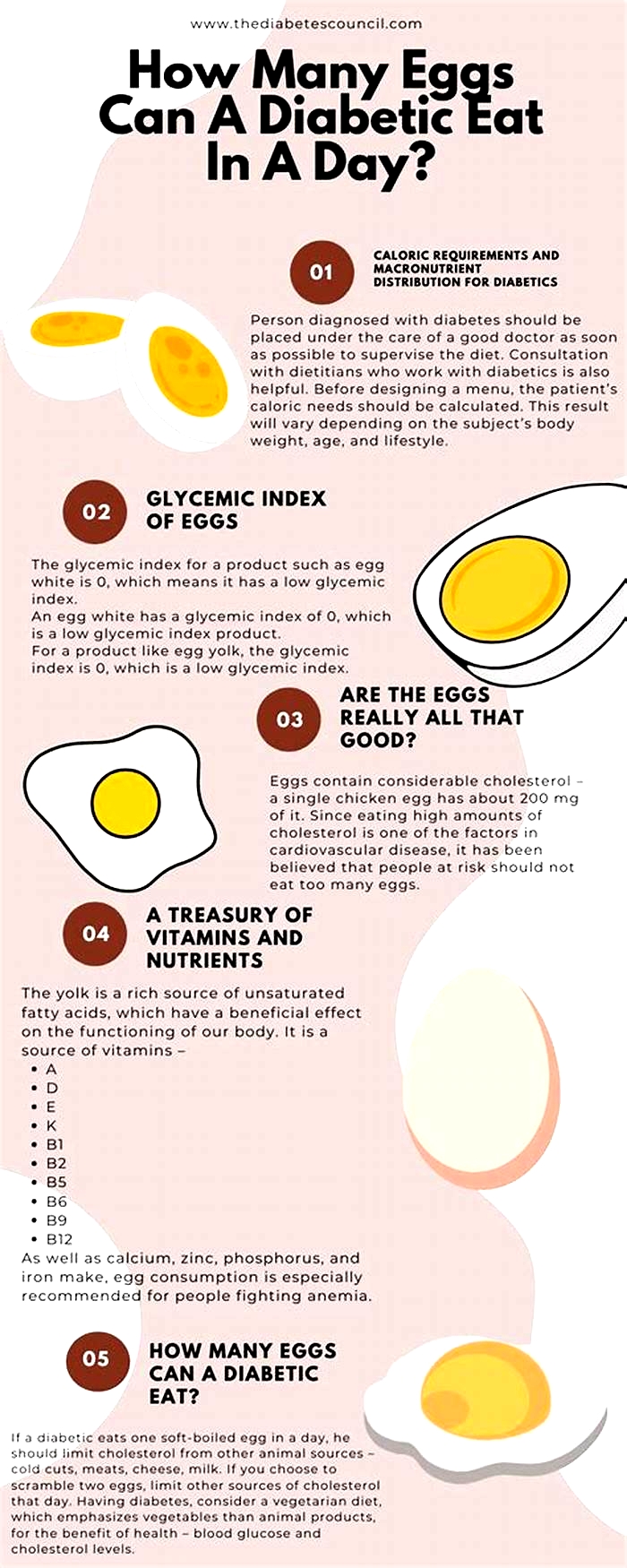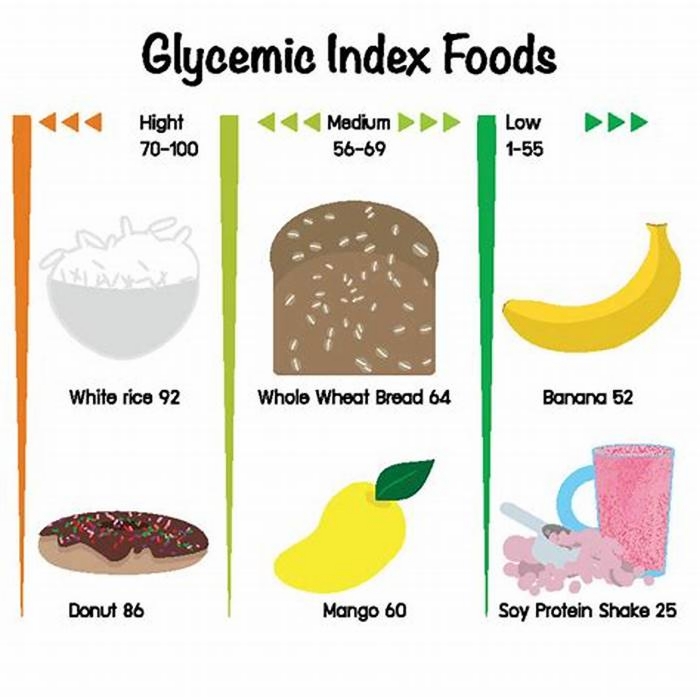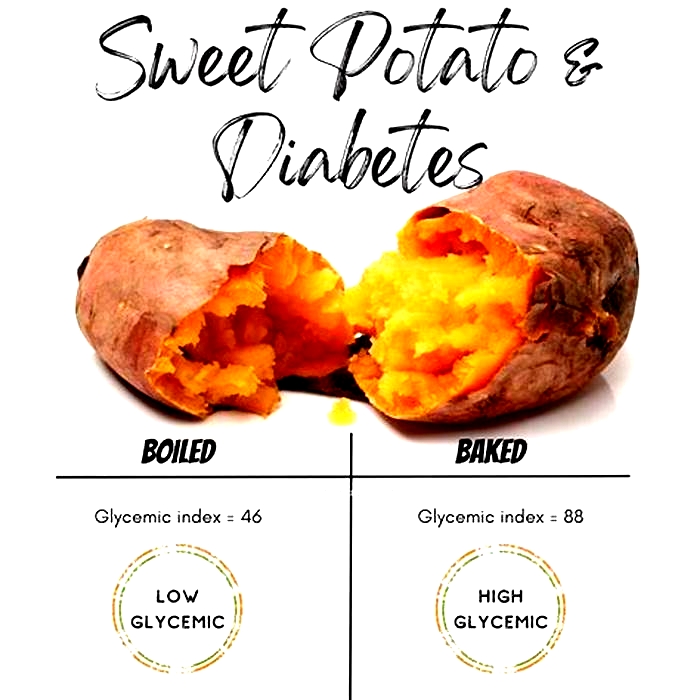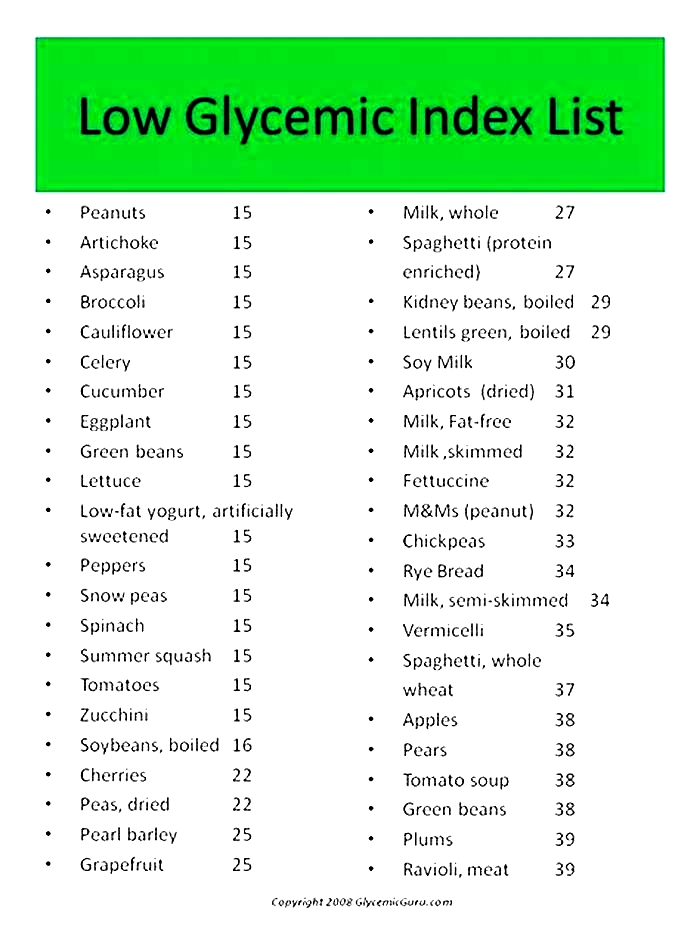low glycemic carbs for dogs

When and how you feed is crucial to caninehealth
If your dog is diagnosed with diabetes mellitus, your veterinarian will help you with insulin dosages. Its not all about insulinthough. Blood glucose levels affectwhat your dog eats, as well as how much they eat too.
Diabetes relates to excess blood glucose (or sugar). Your dog needs just the right amount of glucose in theirbloodstream. Too much, and they will drink and pee far more than usual. Too little, and theywill collapse from hypoglycemia (low blood sugar). In this article, weve outlined some things to keep in mind when feeding a diabetic dog.
Timing
A diabetic dog needs correctly timed meals, instead offree will feeding. Meals 10-12 hours apart work best for most dogs.
Insulin injection
If you can give your dog a treatafter receiving an insulin injection, it provides a more positive association with the injection.
Remember: If your dog skips a meal, do notgive them an insulin dose because it could triggerhypoglycemia. Call your veterinarian if your dog is not eating.
Palatability
Your diabetic dog must eat regularly. If theydont eat, theydont getmedicine. So, you must find a food your dogconsistently consumes. Be careful with treats. If you need treats for training, discuss your choices with your veterinarian. Excessive treats or treats with a lot of carbohydrates, which affect blood sugar, could throw offinsulin regulation.
Avoid highly digestible diets
Highly digestible diets are often yummy, but they are high in sugars. These foods often lead toglucose spikes right after eating and corresponding big drops in blood sugar soon thereafter.
Go prescription
Prescription diets, available through your veterinarian, use ingredients to evenout blood glucose levels, making it easier to keep your dog ona steady dose of insulin. They also must limit fat intake to prevent complications, such as pancreatitis.
Fiber choices
Much of the fiber in your diabetic dogs diet should be insoluble, as this will help your dogfeel full but not provideexcesscalories. Insoluble fiber promotes the movement of food through the digestive tract. Soluble fiber attracts water, turns to geland slows digestion, resulting in more calories released in the colon. For diabetic dogs, moving the food through the digestive tract quickly is advantageous.
For an overweight dog, a diet with 10-20% of the dry foodas fiber is a good plan. For a dog who is in good weight or slightly underweight, look for a diet with 5-15% fiber on a dry basis.
Most guaranteed analyses will not tell you if the fiber in the diet is insoluble or soluble. You will need to look at the ingredient list andconsult with your veterinarian or a veterinary nutritionist. Beet pulp, guar gumand psyllium are common sources of soluble fiber. Cellulose is an example of insoluble fiber.
Weigh-ins
Many diabetic dogs are overweight. If your diet plan includes some weight loss, do frequent weigh-ins at your veterinary clinic so that your dogs insulin dosage can be adjusted as needed. Underweight dogs will need different dietary considerations than overweight dogs. Track your dogs weight as well as glucose levels.
Low fat
Low fat is important for diabetic dogs, since as many as 30% of them become diabetic secondary to pancreatitis. Of course, this is more criticalfor overweight diabetic dogs.
Supplementing with L-carnitine may help with fat metabolism for these dogs. L-carnitine is a natural derivative from the amino acid lysine, and itis often included in weight-loss supplements. Look for a dry-matter carbohydrate level of 25%. Read the ingredientlist for carbohydrates that havea low glycemic index, like soybeans. In contrast, potatoes have a high glycemic index.
Knowing yourdog's specific needs
Finally, if your dog is a well-managed diabetic, do not change theirdiet. Even changing protein sources like switching from a chicken-based recipe to a lamb-based one can influence blood glucose levels.
Changes in your dogs diet may require correspondingchanges in insulin. The ideal diet and feeding regimen for your diabetic dog is the one that keeps their glucose at a steady level.
This article has been reprinted with permission from the Cornell University College of Veterinary Medicines DogWatch newsletter, published by Belvoir Media Group. When you become a member of the Riney Canine Health Center, you will receive a free subscription to DogWatch.
A good guide to good carbs: The glycemic index
If you have diabetes, you know all too well that when you eat carbohydrates, your blood sugar goes up. The total amount of carbs you consume at a meal or in a snack mostly determines what your blood sugar will do. But the food itself also plays a role. A serving of white rice has almost the same effect as eating pure table sugar a quick, high spike in blood sugar. A serving of lentils has a slower, smaller effect.
Picking good sources of carbs can help you control your blood sugar and your weight. Eating healthier carbohydrates may help prevent a host of chronic conditions, especially diabetes, but it is also associated with a lower risk of heart disease and certain cancers.
One way to choose foods is with the glycemic index (GI). This tool measures how much a food boosts blood sugar.
The glycemic index rates the effect of a specific amount of a food on blood sugar compared with the same amount of pure glucose. A food with a glycemic index of 28 boosts blood sugar only 28% as much as pure glucose. One with a GI of 95 acts like pure glucose.
Glycemic index chart
High glycemic foods result in a quick spike in insulin and blood sugar (also known as blood glucose). Low glycemic foods have a slower, smaller effect. |
Choose low glycemic foods
Using the glycemic index is easy: choose foods in the low GI category instead of those in the high GI category (see below), and go easy on those in between.
- Low glycemic index (GI of 55 or less): Most fruits and vegetables, beans, minimally processed grains, pasta, low-fat dairy foods, and nuts.
- Moderate glycemic index (GI 56 to 69): White and sweet potatoes, corn, white rice, couscous, breakfast cereals such as Cream of Wheat and Mini Wheats.
- High glycemic index (GI of 70 or higher): White bread, rice cakes, most crackers, bagels, cakes, doughnuts, croissants, most packaged breakfast cereals.
Swaps for lowering glycemic index | |
Instead of this high-glycemic index food | Eat this lower-glycemic index food |
White rice | Brown rice or converted rice |
Instant oatmeal | Steel-cut oats |
Cornflakes | Bran flakes |
Baked potato | Pasta, bulgur |
White bread | Whole-grain bread |
Corn | Peas or leafy greens |
To learn more about keeping your meals healthy and on track with Diabetes, read Healthy Eating for Type 2 Diabetes,a Special Health Report from Harvard Medical School.
Image: seramo/Getty Images
As a service to our readers, Harvard Health Publishing provides access to our library of archived content. Please note the date of last review or update on all articles.
No content on this site, regardless of date, should ever be used as a substitute for direct medical advice from your doctor or other qualified clinician.
6 Great Sources of Carbohydrates for Dogs: Vet Approved Nutrition Facts
The information is current and up-to-date in accordance with the latest veterinarian research.
Learn moreWhen it comes to dog nutrition, carbohydrates are a tricky subject. While dogs can get energy from protein and fat, many dog food brands contain one or multiple sources of carbs. On the opposite end, there are dog food recipes that are grain-free and low-carb. So, whats the deal with carbs, and are they good for dogs?
Thankfully, carbohydrates can be a healthy source of energy for dogs while also adding additional health benefits depending on the source. There are plenty of sources of carbs that are safe for dogs, from whole grains to fruit.
Lets take a look at some great sources of carbohydrates that are safe and healthy for dogs to eat.
The exact amount of calories an individual animal needs to maintain a healthy weight is variable and influenced by many factors including genetics, age, breed, and activity level. This tool is meant to be used only as a guideline for healthy individuals and does not substitute veterinary advice
![]()
 Top 6 Sources of Carbohydrates for Dogs
Top 6 Sources of Carbohydrates for Dogs
1. Whole Oats
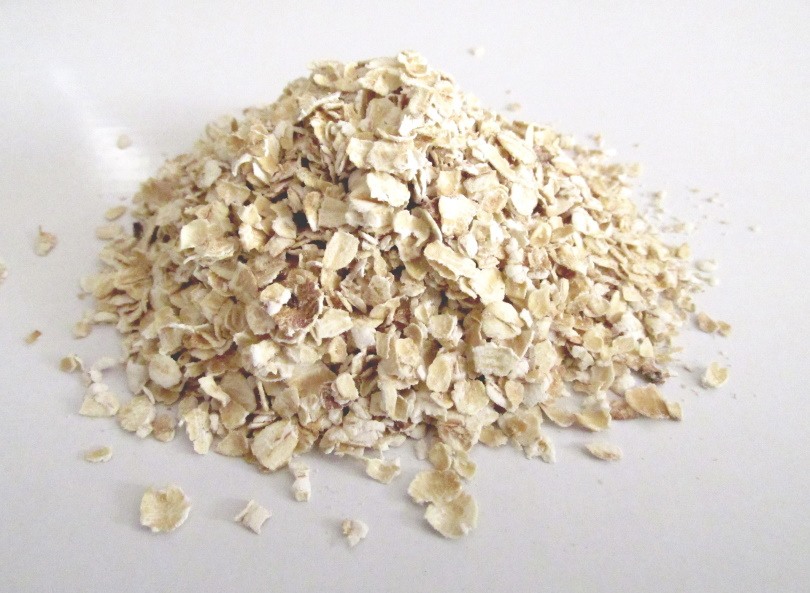
Whole Oats Nutritional Info ( cup):
- 140 calories
- Fiber: 4g
- Protein: 5g
- Fat: 2.5g
- Carbohydrates: 28g
- Sugar: 1g
Serving Size for Dogs: Approx. 1 tablespoon per 20 pounds of weight. Do not exceed 4 tablespoons.
- Note: whole oats are high in calories and can cause weight gain if fed too often.
Oats, in general, whether old-fashioned or rolled, are naturally rich in carbohydrates and fiber. Theyre one of the healthiest sources of carbs for dogs, especially for homemade dog food and treats. If youre planning on switching your dog to homemade cooking, consider adding oats as a main source of carbohydrates. Not only are they cheap and available virtually anywhere, but theyre also great for dogs that need a little extra fiber.
2. Rice
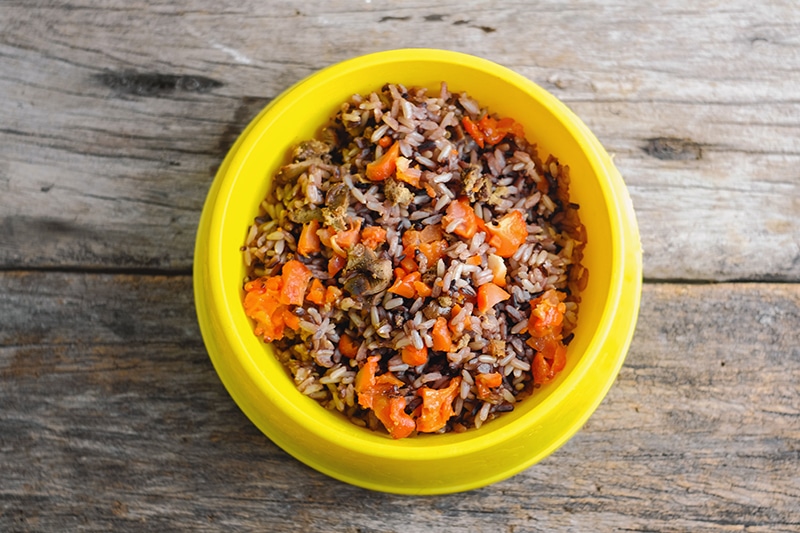
Brown Rice Nutritional Info ( cup):
- 108 calories
- Fiber: 2g
- Protein: 3g
- Fat: 1g
- Carbohydrates: 22g
- Sugar: 0g
Serving Size for Dogs: No more than 10% of your dogs total diet, especially in smaller dogs and dogs with diabetes and digestive issues. While white rice is recommended for dogs bland diets, brown rice should not be given to dogs with diarrheaor othergastrointestinal issues because it is not processed and is harder to digest. Adding rice to a diet already rich in carbs will cause an imbalance, so its crucial to talk to your vet before adding rice.
- Note: Rice is a high-glycemic and high-caloric source of carbs and can cause issues in dogs with diabetic and thyroid conditions. Never feed your dog any type of rice that has been cooked in oils, butter, or spices, as they can be potentially toxic.
Although rice is a bit high on the glycemic index, its still one of the better carbohydrate options. White rice may be easier for your dog to digest, but brown rice is a little more nutritious. Rice is a great source of carbs and protein, especially for dogs that are active and require a lot of fuel. Make sure any rice products do not contain oils, spices, or butter that can be potentially toxic or harmful to your dog.
3. Barley
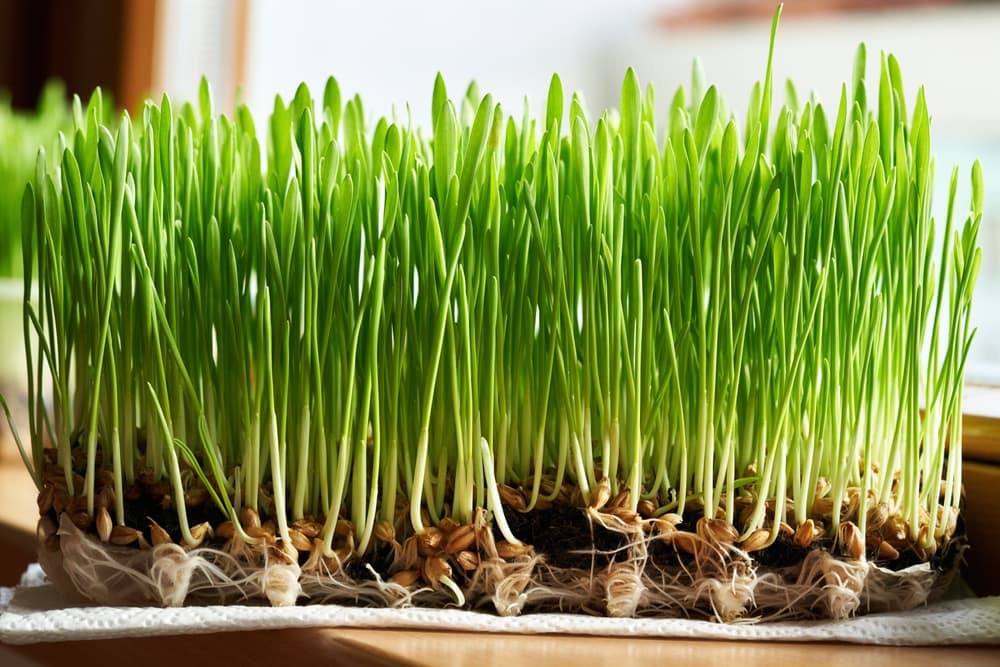
Cooked Pearled Barley Nutritional Info ( cup):
- 99 calories
- Fiber: 3.1g
- Protein: 1.82g
- Fat: 0.3g
- Carbohydrates: 22.75g
- Sugar: 0g
Serving Size for Dogs: No more than 10% of your dogs weekly meals. Barley is high in fiber and can cause digestive issues if fed too much at once. Consult with your vet if your dog has stomach problems before feeding barley.
Barley is sometimes forgotten as a dog-safe carbohydrate, even though its in dozens of commercial dog food recipes. Its a whole grain that contains multiple nutrients essential for a balanced diet, such as potassium, iron, and vitamin B6. Although this grain contains gluten, most dogs do perfectly fine with these types of grains. However, be sure to contact your vet to ensure your dog doesnt have a grain intolerance.
4. Sweet Potatoes
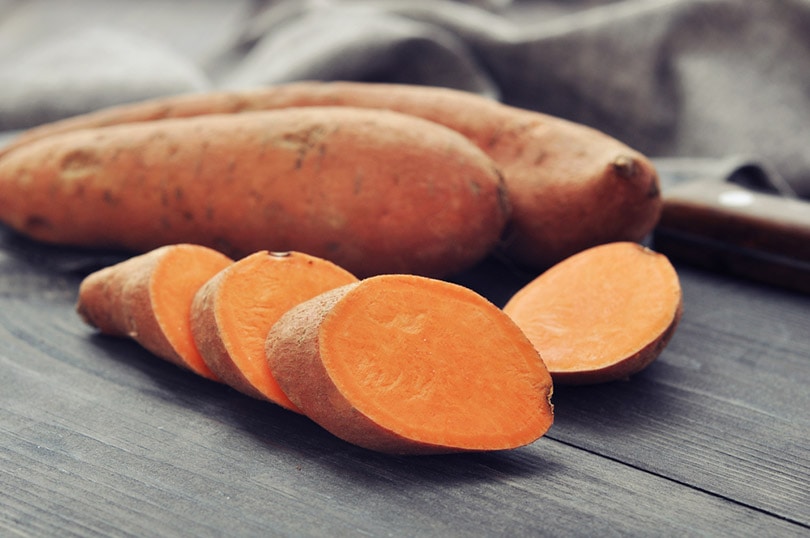
Cubed Sweet Potatoes Nutritional Info (1 cup):
- 114 calories
- Fiber: 4g
- Protein: 2.1g
- Fat: 0.1g
- Carbohydrates: 27g
- Sugar: 6g
Serving Size: Feed no more than 15% of your dogs weekly food intake. Serve as a treat or occasional snack. Consult with your dogs vet first before feeding them, especially breeds prone to heart problems, food allergies, or diabetes.
Sweet potatoes are a starchy source of carbs that most dogs can eat, which is evident in the dozens of commercial dog food recipes that contain sweet potatoes. Sweet potatoes are a dietary source of vitamin A, vitamin C, vitamin B6, potassium, and calcium, so they are nutritious for your dogs nervous system, eyes, skin, muscles, and bones. In addition, they contain beta carotenes that have antioxidant effects aiding your dogs immunity. However, discuss with your vet before feeding them to your dog, as excess vitamin A can cause some bone and muscle issues. Although gluten-free, sweet potatoes are high in carbs, so they are best as a treat instead of the main staple in your dogs diet; this point is especially important in diabetic dogs.
5. Banana
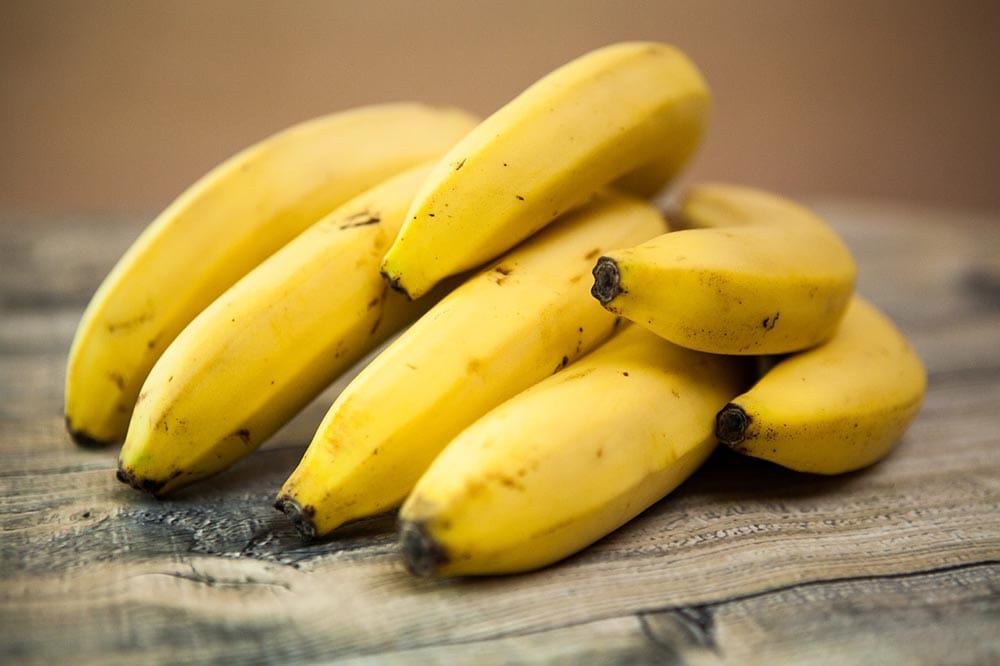
Medium Ripe Banana Nutritional Info (1):
- 110 calories
- Fiber: 3g
- Protein: 1g
- Fat: 0g
- Carbohydrates: 28g
- Sugar: 15g
Serving Size: Small dogs: one or two half-inch pieces a day. Medium dogs: up to of one medium banana a day. Large dogs: up to half of one medium banana a day.
Many dogs love the flavor of bananas, which are rich in carbohydrates and potassium. Theyre a great source of carbohydrates but best fed to your dog as a treat instead of the main part of your dogs meals. Bananas are naturally high in sugar and high in the glycemic index, so dogs with diabetes and thyroid conditions should avoid bananas. Before feeding your dog a piece of banana, double-check with your vet to make sure it will work with your dogs current diet.
6. Millet

Cooked Millet Nutritional Info ( cup):
- 103 calories
- Fiber: 1.1g
- Protein: 3g
- Fat: 0.85g
- Carbohydrates: 20g
Serving Size: Serving Size for Dogs: Approx. 1 tablespoons per 20 pounds of weight. Do not exceed 4 tablespoons.
- Note: Millet is high in calories and can cause weight gain if fed too often.
Millet is a cereal-type of grain that occurs in both human and dog food, usually in cereals, kibble, and dog treats. Not only is it rich in healthy carbohydrates, but its an excellent source of dietary fiber. Millet is not as popular as other grains in homemade dog food, but that doesnt mean you should count it out. Its also lower on the glycemic index than other sources of carbs without containing any gluten. Millet is a good choice for dogs that cant have potatoes or rice, especially dogs with conditions affected by high-glycemic foods.
![]()
 Why Are Carbohydrates Important for Dogs?
Why Are Carbohydrates Important for Dogs?
When it comes to dog nutrition, carbohydrates are not as essential to a balanced diet as other nutrients. While some dogs may thrive with an outside source of energy in their diets, they can usually get enough energy from breaking down fat and protein. There are several reasons why you should or should not feed your dog carbs, especially if your dogs diet already contains it.
Although they can provide energy for your dog, most sources of carbs have additional nutrients like fiber or vitamins. On the flip side, some types of carbs are high-glycemic foods that can cause blood sugar spikes. Working dogs and high-energy dogs may need an extra source of energy to be healthy, while less energetic dogs may need a lean, low-carb diet.
Dog diets vary in nutrition levels and diet types, so you must provide for your dogs specific needs. While giving your dog a few carb-heavy treats may not cause issues, adding it daily can throw off a balanced diet. If you think your dogs diet is off-balanced or lacking in sources of energy, contact your veterinarian to discuss carbohydrate options that will work best for your dog.

How Many Carbs Does My Dog Need?
How carb-heavy your dogs diet can be is a heavy question, one that is almost impossible to answer without knowing what is in your dogs current food. This is a question best left to veterinarians, especially for dogs with food sensitivities and food-triggered health conditions. Some types of carbs can have additional properties that may cause health problems to worsen, so its crucial to ask your vet before feeding them.
A dogs diet may have anywhere from 20% to nearly 60% or more carbohydrates. Some commercial dog food has more or less than this amount, depending on the quality of ingredients and type of recipe. Working and high-energy dogs may need more carbs than other dogs, but thats not always the case. Again, its best to consult with your vet for your dogs specific dietary requirements before changing anything.
Grains vs Fruits vs Vegetables as Carb Sources
Carbs are in a wide variety of foods, like whole grains, fruits, and vegetables. Carbohydrates also come in two forms: complex and simple carbs. Whole grains like oats and millet contain complex carbs, which take longer to break down. Sugar and foods like fruit contain simple carbs, which break down much faster. Both simple and complex carbs have their place in a balanced diet, but simple carbs like sugary fruits can cause flare-ups in conditions like diabetes and thyroid disease. Fruits like bananas are a nutritious form of simple carbs, but theyre high in sugar and should be limited as a treat or snack once a week.
Starches and whole grains are complex carb sources, which take longer for your dogs body to use and absorb. While they may not cause as many issues as sugary fruits and simple carbs, starches, and whole grains can throw off a diet that doesnt need them. Adding starches and whole grains as treats is generally safe to do, but we recommend asking your vet to help create a diet plan for your dog.
![]()
 Conclusion
Conclusion
Carbohydrates can be a great way to give your dogs diet an energy boost. Theyre generally safe for dogs to eat, especially sources that contain dietary fiber. While they often have a negative reputation, many dogs thrive on a diet with carbohydrates. Whether youre looking to supplement your dogs food or make dog food at home, there are many healthy and natural carbs that you can give to your dog. Always consult with a veterinarian before changing your dogs diet, especially with dogs that have allergies or health conditions triggered by food.
See also:
Featured Image Credit:Dmitriev Mikhail, Shutterstock


